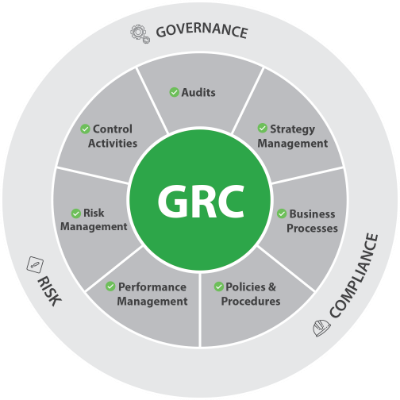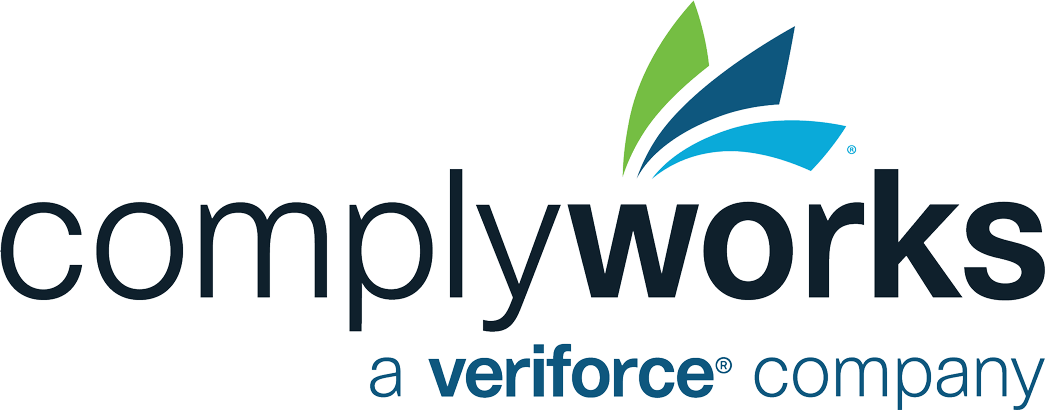Governance, risk management and compliance (GRC) — is it a platform, a process, or a technology? What is within the scope of GRC and how should your organization approach it? In this article, we go back to the basics and review what GRC is, who is involved and why it is mission critical to your business.
Today, the scope of GRC extends beyond your traditional financial or legal compliance to include components like performance management, sustainability, quality assurance, and even practices such as information security management, ethics management and business continuity planning. To gain a better understanding, imagine how the components in this diagram are integrated into each department or function of your business.
The scope of GRC
GRC isn’t just the computer software you use to manage it — it’s a set of capabilities that enable your organization to achieve its objectives, address uncertainties and operate with integrity. Processes and practices that run across all departments and functions of your business to help achieve Principled Performance are all an integrated part of GRC.Today, the scope of GRC extends beyond your traditional financial or legal compliance to include components like performance management, sustainability, quality assurance, and even practices such as information security management, ethics management and business continuity planning. To gain a better understanding, imagine how the components in this diagram are integrated into each department or function of your business.


Who is involved?
While most organizations don’t allocate an entire department to GRC management, they will typically have a team of staff in place to manage a GRC platform or tool. In any organization, staff from departments such as IT, legal, finance, HR and the executive team are all included in GRC. But when GRC handled by these various departments becomes siloed or disjointed, efforts become redundant and counter-productive.Instead, organizations should take a standardized, ground-up approach to GRC. If done right, your organization can benefit from reduced costs, a decreased impact on operations, and the gained ability to repeat processes in a non-duplicative, consistent and efficient way.
Why GRC is important
Before we can fully understand the benefits of GRC, understanding why companies are embracing the practice is important. In an evolving corporate landscape, organizations are learning to respond to the:To maintain a competitive advantage, a business must be agile and respond in a timely manner to the changing risks, regulations, laws and situations it is presented with. If effectively integrated into a business, GRC helps to control those risks by aligning business units, maintaining accurate information and improving efficiencies across the entire organization.
Why most organizations use a GRC Software
A lot of great things came out of the 80s, but unfortunately compliance spreadsheets aren’t one of them. Ironically, organizations that use spreadsheets to manage GRC are putting themselves at an even greater risk to have governance, risk and compliance issues. A centralized compliance platform will:Could your organization benefit from any of these automated functions? If so, take the ComplyWorks compliance management platform for a test drive by booking a demo today.





